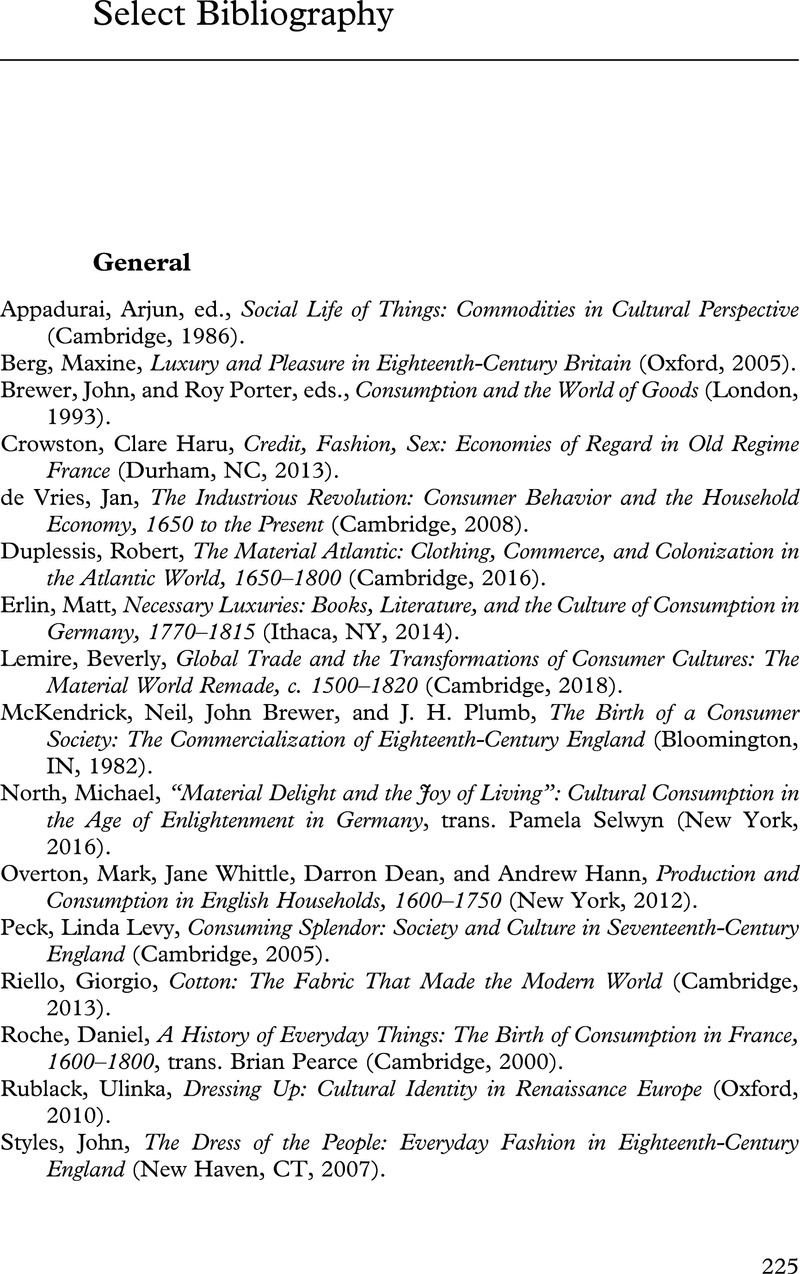Book contents
- The Consumer Revolution, 1650–1800
- New Approaches to European History
- The Consumer Revolution, 1650–1800
- Copyright page
- Dedication
- Contents
- Illustrations
- Acknowledgments
- Abbreviations
- Introduction
- 1 Consumer Revolution
- 2 The Globalization of European Consumption
- 3 Going Shopping
- 4 The Cultural Meanings of Consumption
- 5 Consuming Enlightenment
- 6 The Luxury Debate
- 7 The Politics of Consumption in the Age of Revolution
- Conclusion
- Select Bibliography
- Index
- References
Select Bibliography
Published online by Cambridge University Press: 13 January 2022
- The Consumer Revolution, 1650–1800
- New Approaches to European History
- The Consumer Revolution, 1650–1800
- Copyright page
- Dedication
- Contents
- Illustrations
- Acknowledgments
- Abbreviations
- Introduction
- 1 Consumer Revolution
- 2 The Globalization of European Consumption
- 3 Going Shopping
- 4 The Cultural Meanings of Consumption
- 5 Consuming Enlightenment
- 6 The Luxury Debate
- 7 The Politics of Consumption in the Age of Revolution
- Conclusion
- Select Bibliography
- Index
- References
Summary

- Type
- Chapter
- Information
- The Consumer Revolution, 1650–1800 , pp. 225 - 242Publisher: Cambridge University PressPrint publication year: 2022

